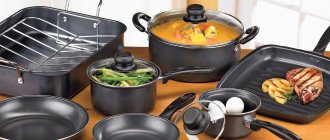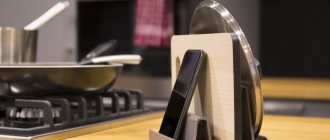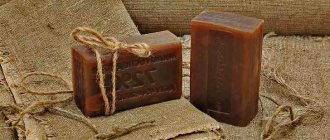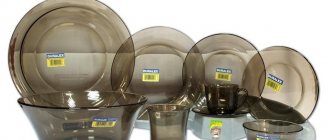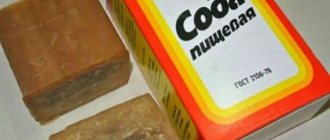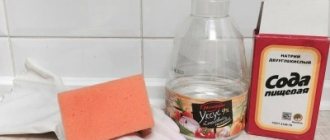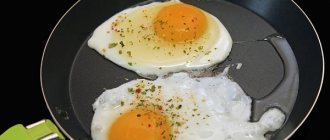Cleaning pans and pots using glue and soda, why it works
Soda (sodium carbonate) is the sodium acid salt of carbonic acid. It quickly dissolves in liquid, creating an alkaline environment that breaks down fat and exhibits bactericidal and antiseptic properties.
Glue is a syrupy mixture of resins, plasticizers, hardeners, potassium or sodium silicates. The combination of these components softens water, increases acidity, which corrodes stubborn fats.
Baking soda based product
Baking soda as a cleaning component can be used in two ways:
- Dissolve 4-5 tsp in 5 liters of liquid. baking soda. Pour into the pan, boil, reduce heat to low, hold for 20 minutes. Let it cool, scrub the remaining stains with a brush, pour out the liquid, and rinse the dishes under the tap.
- Fill a wide container with 3 liters of liquid, add 3 tbsp. l. soda, pour a glass of dishwashing gel. Lower the pan and boil for half an hour. Let cool, rub with a sponge, rinse.
Cleaning with PVA glue
The recipe includes: PVA glue, water, soda, laundry soap.
Sequencing:
- Fill a bucket or basin with 4 liters of liquid and boil.
- Grind a third of a bar of laundry soap, pour into a container, pour in 2 tbsp. l. PVA, add 1 tbsp. l. soda
- Place the frying pan inside the container for half an hour.
- Take out the item to be cleaned and wash it with regular detergent under the tap.
Be sure to read:
How to dispose of a mercury thermometer at home if it breaks, where to put it
If the product cannot be boiled, this method will do:
- Fill a wide container with 10 liters of boiling water.
- Add 0.2 kg of PVA, 0.25 kg of soda, mix.
- Place contaminated items in the container for 1.5 hours.
- Remove the pans and clean them under the tap with a brush or cloth.
Application for boiling
One of the methods to quickly restore the radiance and shine of fried pans is boiling with soda.
Algorithm of actions:
- Place the largest saucepan or basin on the stove (the frying pan should fit completely), fill the container with hot water.
- Add soda ash to the pan at the rate of 70 g per liter, bring the water to a boil.
- Place a dirty frying pan in boiling water and leave to simmer over low heat for at least one hour.
- Remove the pan from the stove, after the water has cooled, take out the boiled dishes.
During boiling, all the fat will come off the walls of the frying pan, and all that remains to be done is to rinse it under running water.
What nuances need to be taken into account?
Cleaning with soda and glue should be carried out in compliance with the rules:
- Do not use products on kitchen utensils with chrome-plated parts, Teflon coating,
- You cannot clean a product with handles made of wood or plastic if they cannot be removed first: the material will become rough, crack, melt, and the varnish may also come off,
- the use of enamel containers is undesirable, as the coating will be damaged,
- It is better to use hot water: it quickly breaks down fat,
- you need to take into account the material from which the frying pan is made, since each of them has its own safe temperature and active ingredient.
When washing with other substances, you need to consider the following points:
- aluminum, Teflon, non-stick surface does not tolerate harsh cleaning components, powders, sand
- ceramics will not withstand exposure to too high/low temperatures,
- aluminum walls do not withstand the effects of aggressive chemical components,
- On all coatings it is easier to remove fresh deposits than to scrub off old ones.
What you can boil and what you can’t
Not all kitchen utensils are allowed to be boiled in such a soda-soap solution with glue. The hot method is not suitable for washing plastic dishes, as well as:
- varnished products (the top layer will wash off or crack);
- wooden spoons;
- graters;
- frying pans with Teflon (it will be damaged and stop performing its functions);
- aluminum (at high temperatures this metal begins to darken; it can only be soaked in warm water and soda or cleaned with a soft sponge and soap);
- shiny glasses and other utensils with a coating (the shine will disappear and the items will need to be restored).
Traditional cleaning methods
Home remedies that most housewives have on hand are also used to clean products with plaque and soot.
Laundry soap
This product is one of the most affordable, and its effectiveness has been proven over many years of use. Laundry soap alkalizes the environment, which helps remove carbon deposits.
Cleaning method:
- Pour water into the pan and rub half a bar of laundry soap.
- Place the item to be cleaned on the stove and boil the soap solution in it for half an hour.
- Pour out the liquid and wash the pan with any detergent.
Contaminated items can also be washed in the following way:
- Rub a bar of laundry soap.
- Pour water into a 10-liter container (for example, a bucket), add the grated component, add 250 g of soda and 100 ml of PVA.
- Place a fatty item in it and boil for at least 10 minutes.
- When the crust comes off, drain the solution and wash under the tap.
Be sure to read:
How to clean an apartment in 15 minutes: step-by-step instructions for a housewife
Vinegar and citric acid
Vinegar and citric acid, when combined with each other, easily clean plaque and soot.
Work progress:
- Take 2 liters of liquid into a large basin.
- Add half a glass of citric acid.
- Pour in 0.2 kg of vinegar.
- Boil the mixture and place the dishes in it for 20 minutes.
- Remove the utensils and scrub the surface with a brush.
- Add 4 tsp. soda, place the dishes back.
- Boil over low heat for a quarter of an hour, then remove the item to be cleaned and clean it under the tap with a coarse washcloth.
Reviews about the method
Anna, 26 years old
Recently I visited my grandmother in the village and decided to wash her old frying pans. There was nothing at hand from expensive means. I used baking soda and PVA glue. Is this possible? It turned out that yes. I made a hot solution and it turned out perfect! Now I will save money and clean everything in the kitchen. Cheap and cheerful, but most importantly - without any chemicals and does not spoil the dishes.
Arkady, 47 years old
Kitchen utensils are perfectly cleaned of grease with simple soda, stationery glue and hydrogen peroxide - this is an ideal product for cleaning dishes. The components are always at hand and there is no need to waste money. I boiled them in an old bucket, soaked them and that’s it – the pans are like new! My friends didn't believe it at first. One day we came in and I was making a soda-glue mixture. We saw her action in reality and gasped!
Christina, 62 years old
Washing soda is my all-purpose choice for every day, but a neighbor suggested that if you add laundry soap and simple liquid glue to it, you get a mixture for cleaning pots and pans from scale and grease. I tried it and was delighted! Now I call on this method to help every time the children come and cook barbecue. It is also ideal for skewers, grills and barbecues.
How to clean plates from yellow deposits
A yellow coating usually forms on the back of the plates. The reasons are insufficient cleaning, low temperature water, and improper storage.
Ways to get rid of yellowness:
- Mustard. It is necessary to add 4-5 tbsp. l. powder per 2 liters of water and place ceramic products in a container. After 40 minutes, remove the bowls and rinse under water.
- Sodium carbonate with vinegar (or hydrogen peroxide). This method involves obtaining a cleaning paste. To 3 tbsp. l. 9% vinegar, you need to add the same amount of sodium carbonate (or peroxide). When the foam settles, clean the plates with the resulting paste and leave for 20 minutes. After this, the bowls should be rinsed with water; a rough-textured kitchen sponge will improve cleaning.
- Washing powder and bleach. You need to mix 2 tbsp. l. components, pour 5 liters of hot water. Immerse yellowed bowls in the solution for 2 hours, then clean them with washing gel and rinse thoroughly.
Recipe options
On the Internet you can find many variations of the recipe described above. Not all of them are equally effective, and some are completely useless:
- A solution consisting only of water and glue dissolves fats worse than one that includes all the ingredients. And replacing silicate glue with regular PVA is completely meaningless and negates the housewife’s efforts to put the dishes in order.
- Excluding laundry soap from the solution makes cleaning heavily soiled utensils more difficult.
- The use of sodium bicarbonate (regular soda, which is used in cooking) instead of sodium carbonate (soda ash) reduces the alkalinity of the solution, which also interferes with the normal softening of carbon deposits.
- But the most terrible mistake arises as a result of the similarity of the names of soda ash and caustic soda. The latter is caustic technical soda. The substance belongs to the second hazard class according to GOST 12.1.007. Caustic soda causes chemical burns upon contact with skin and severe corrosion of metals upon prolonged contact.
How to clean dishes from carbon deposits and old fat
A frying pan with old ingrained fat and soot is difficult to handle, especially for cast iron utensils that have been used for decades.
However, there are several methods that can rid dishes of old stains:
- Vinegar. Mix 1 part vinegar with 3 parts water, fill the frying pan with this mixture, boil it, switch the stove to low heat for 3 hours, while ventilating the room. Clean, rinse thoroughly.
- Sand . Pour sand into the kitchen utensils and place them on low heat, making sure to ventilate the room. After 2 hours, remove the sand and rinse the pan.
- Blowtorch. While outside the living space, in the open air, turn on the device. Direct a stream of fire onto the dishes and hold in one place for no more than a minute.
- Coal. Pour crushed activated carbon tablets onto the wet walls of kitchen utensils. Leave for 1 hour, then wash with dish soap and rinse.
- "Coca Cola". You need to pour the drink inside the frying pan, leave for 2-3 hours, then rinse the dishes as usual.
Be sure to read:
20 tricks to quickly clean up your home without getting tired
How to wash removable plastic parts
Non-metallic elements of frying pans or pots, as well as the handles of gas stoves, can be washed not only by hand, but also in the dishwasher. The main condition is that the plastic should not be soft. These parts are loaded together with other dishes and the standard mode is turned on. They should not have any labels or stickers on them so as not to damage the washing machine. If there is a function for regulating the water temperature, then it is set to a level of +30-40 degrees.
It is not always possible to quickly wash grease stains and scale from plastic parts using a dishwasher. If this fails, you will have to work hard manually. The same applies to wooden parts that cannot withstand high temperatures. It is better to soak them for 10-15 minutes in a warm soapy solution, and then wipe them with a soft sponge or toothbrush.
We clean with commercial chemicals
If the housewife does not have time, you can buy a ready-made household cleaning product. It can be in the form of gel, powder, cream.
Simple stains can be dealt with by:
- "Fairy"
- "AOC"
- "Sorti"
- "Frosch"
- "Pemolux"
- "Comet"
- "Silit"
- "Domestos"
- "Mr. Muscle", etc.
Stronger and caustic substances remove old dirt and soot. They act instantly and remove almost any stain. Before using them, it is better to wear a respirator and gloves to protect the skin and respiratory organs from negative effects.
Suitable options for dealing with persistent problems are:
- "Shumanit"
- "Wizard-Antinagar"
- any substance that cleans sewer pipes and bathtubs.
Safety regulations
The ingredients and preparations are not dangerous to humans or pets. The main thing is not to add them to food or inhale them. To prevent components from entering the digestive tract, cleaning is performed away from children and animals.
It is not recommended to inhale the vapors of the ingredients during boiling. To prevent vapors from entering the respiratory tract, work is carried out in a mask or respirator.
Additionally, high-quality ventilation is provided, or at least the window opens.
